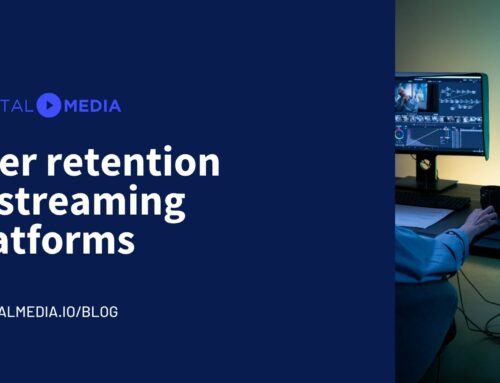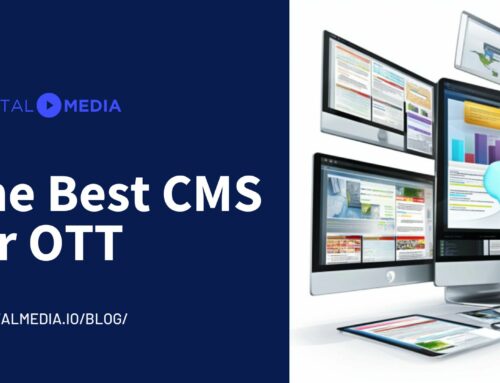In this context, various digital media outlets have taken on a pioneering role by delving into the world of video-on-demand (VOD) content. The transition to audiovisual formats is a strategic response to the growing demand for multimedia experiences among consumers. Video viewing has become an integral part of the digital experience, and newspapers, aware of this trend, have chosen to diversify their offerings.
Some of the newspapers that have incorporated this strategy into their business include:
- The New York Times: The New York Times has expanded its brand through documentaries and video series, including exclusive content for its subscribers. Additionally, it has launched its own video channel within its digital platform, featuring original content such as mini-documentaries, interviews, and reports.
- The Guardian: The Guardian has produced and distributed original video content, including documentary series and short films, often focusing on social justice, politics, and environmental issues.
- The Washington Post: The Washington Post has invested in the production of original video content that is distributed through its website and third-party platforms like YouTube. This content includes documentary series, visual reports, and explanatory videos.
- El País: El País has ventured into the VOD realm by creating a digital video channel that broadcasts directly to homes via Smart TVs (known as FAST channels). Funded through advertising, this channel not only expands the range of content offered by the newspaper but also represents a strategy to maintain and attract a broader audience, particularly those seeking multimedia experiences and visual formats.
- The Atlantic: The Atlantic has ventured into producing premium video content, including documentaries and series exploring social and political issues.
- Le Monde: Le Monde has developed audiovisual content, including documentary series and informational videos, to complement its offerings.
- HuffPost: HuffPost has produced a variety of video content, including interview series, debate programs, and documentaries. This content is distributed through its website and platforms like YouTube.
These media outlets have recognized the importance of video content as part of their diversification strategy, adapting to changes in information and entertainment consumption habits. By expanding into VOD, they have not only enhanced their value proposition for subscribers but also opened new avenues for monetization and user retention.

Traditionally, newspapers and media outlets have used separate technological platforms to manage text and video content. This segmentation has led to increased complexity in the technological infrastructure, significantly complicating the management of business models, whether based on advertising, subscriptions, or other monetization methods. The duplication of technologies not only increases operational costs but also creates asymmetries and challenges in data integration and analysis, hindering efficient and coherent resource management.
However, in recent years, innovative solutions have emerged, such as CMS (Content Management Systems) specialized in OTT (Over-The-Top) and video, like the one we have developed at Fractal Media. These new CMS allow for unified and centralized management of both text and video content, integrating different realities and business models into a single platform. This means that media companies can handle their content and monetization strategies in a much more efficient and agile way.
What are the advantages of a single tool for text and video content providers?
The advantages of this unification are numerous and significant. First, management efficiency increases considerably, as teams no longer need to switch between different platforms to publish or modify content. Second, monetization capabilities are amplified, as more sophisticated and segmented strategies can be applied, such as the use of paywalls that adapt to different types of content and audiences. For instance, with these new CMS, a paywall can be implemented to apply equally to videos, texts, or images, allowing specific rules to be set for each type of file. A practical example would be that users in a particular country have to pay to access videos, while users in another country can view them for free, and the same could be applied to textual content.
Finally, the ease of technological evolution is another major advantage of these unified systems. As new needs or trends emerge in the market, it is much easier to adapt and update a single platform than to do so in two separate systems. This not only saves time and resources but also allows media companies to stay at the forefront of implementing new functionalities or business models, ensuring their competitiveness in an increasingly dynamic and demanding digital environment. In this way, the traditional model of using two CMS and two different infrastructures becomes completely obsolete in light of the capabilities offered by these modern and integrated systems.
What opportunities does diversification into the video content industry offer digital newspapers?
- User Engagement: Video tends to attract and retain user attention more effectively than text or static images, thereby enhancing advertising opportunities and boosting user retention.
- Monetization: This is an additional revenue stream that ensures financial sustainability in an increasingly competitive environment.
- Real-Time News Coverage: Video and live broadcasts allow digital newspapers to cover news in real time more immediately.
- Competition and Differentiation: In a highly competitive digital environment, including video content can be a strategy to differentiate and stand out among various offerings. Providing a wider range of content formats can attract different audience segments.
The integration of video content by digital newspapers can include everything from news and reports to entertainment and analysis. It is a natural evolution as media outlets seek to meet the changing demands of their audience and adapt to the ever-changing digital landscape.
What should you consider when creating your own OTT TV channel?
Here is a basic guide to help you start your own OTT channel:
- Identify your target audience and define the type of content you want to offer. It could be entertainment, news, education, or a combination of several genres.
- Analyze other OTT channels in your niche to understand what works and what doesn’t. Observe their content strategies, user interface, and monetization options.
- Decide how you will monetize your channel. You can opt for advertising, subscriptions, in-app purchases, sponsorships, or a combination of these options.
- Choose the technological platform that fits your needs. You can check out the best options on the market in this article.
- Organize your programming coherently and ensure you have an attractive and varied content library.
- Customize your OTT channel’s user interface. Make sure it’s easy to navigate and provides an engaging user experience.
- Streaming quality is key to retaining your audience. Ensure your content streams smoothly and in HD quality.
- Consider offering streaming on multiple devices, such as mobile phones, tablets, smart TVs, etc.
- Use digital marketing strategies to promote your channel. Utilize social media, email marketing, and other tactics to reach your target audience.
- Use analytics tools to evaluate your channel’s performance. Measure metrics such as user retention, viewing time, and content interaction. Learn from this data and adjust your strategy as needed.
Remember that the success of your OTT channel will largely depend on the quality and relevance of your content, as well as the ease of use of your platform.
Choosing the right platform will depend on your specific needs and the scope of your video content distribution project. It is essential to thoroughly evaluate the advantages and disadvantages of each solution before making a decision. At Fractal Media, we will be happy to advise you and present our technological solution. Contact us.




